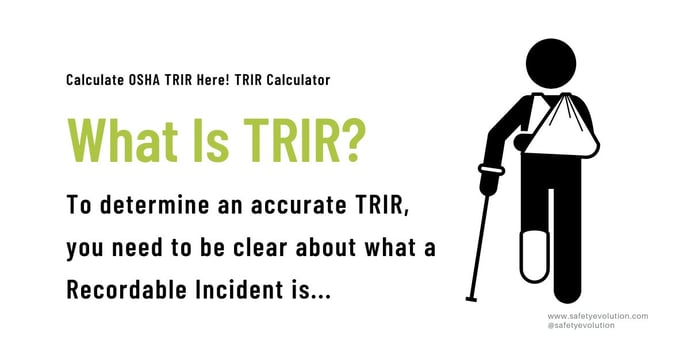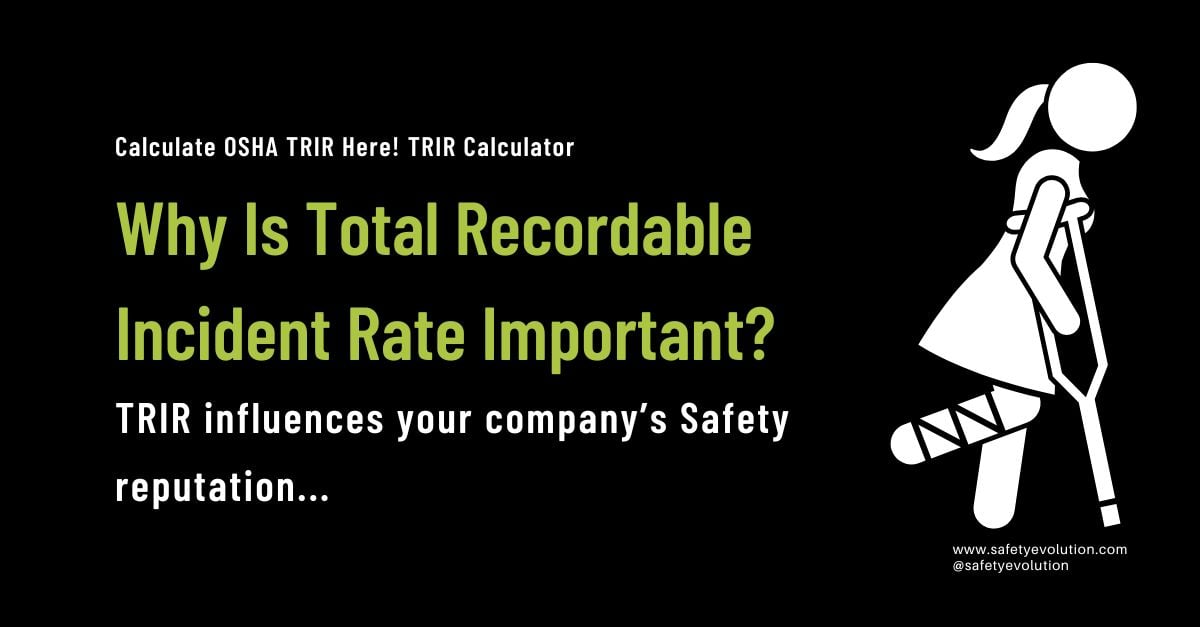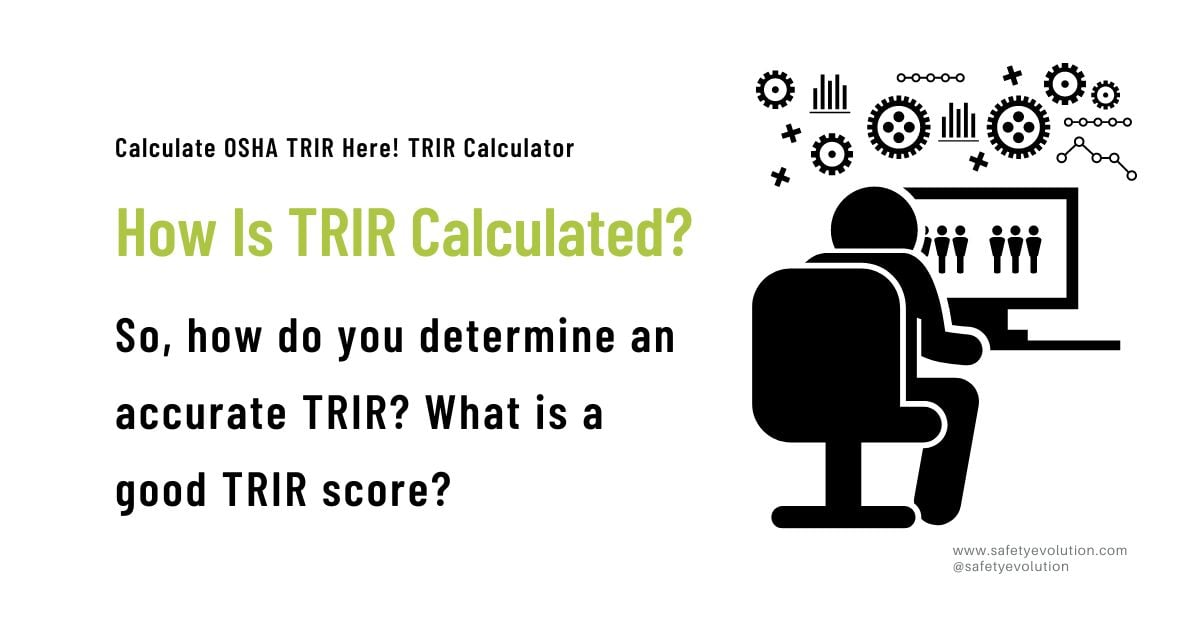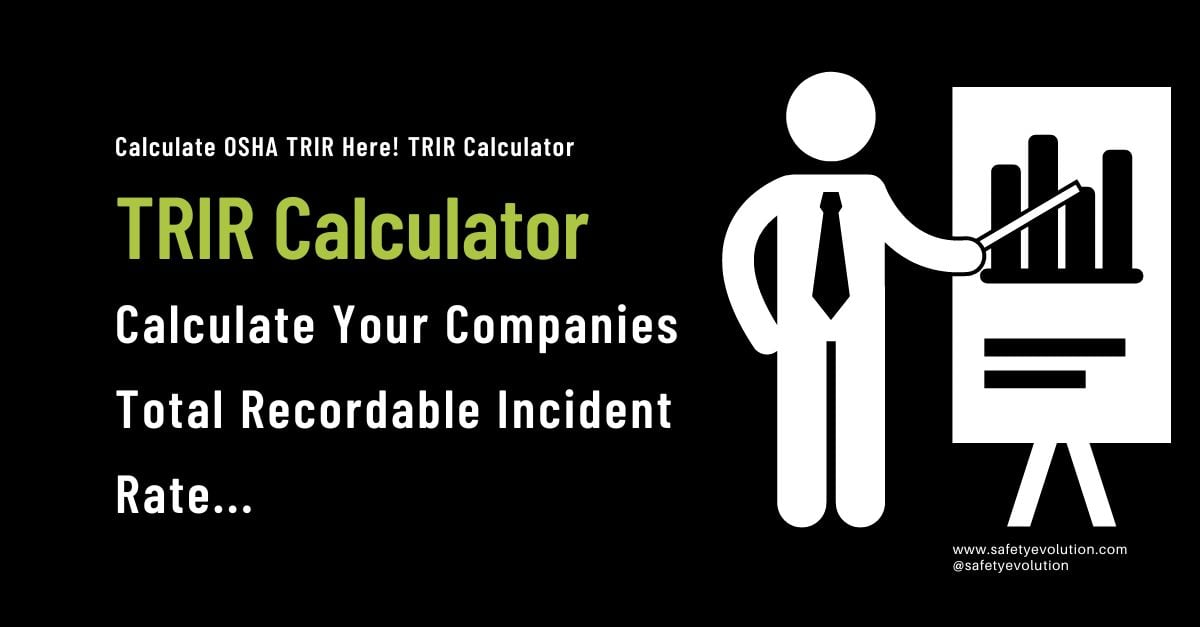Do you believe that one small thing can have a BIG impact? Well, when it comes to your TRIR score, believe it!!
How can one small number called TRIR, calculated by a pretty simple formula, have so much importance? Why is it vital to the continued improvement of your safety program?
Calculating your Total Recordable Incident Rate is pretty simple. We’ll look at how TRIR Is calculated, of course ( after all, we promised that in our title!) But TRIR is so much more than just a number!
Workplace safety is a key concern for every employer. The aim is to reduce or eliminate incidents and injuries successfully. Time and money are invested in training, hazard assessment, control measures, and risk management. Behavior based and proactive safety are the models used by companies committed to the safety of their employees.
You and your team have initiated numerous safety programs, been diligent in ensuring workers have adequate training, and have dug deep into the causal factors of incidents to create meaningful corrective actions.
So far, it looks like you are doing everything right. But are you?
How does your company compare to others in your industry?
How does your safety program record measure up?
And most importantly, how do you determine if you are, indeed, “doing it right” when it comes to safety?
This is where OSHA ( Occupational Safety and Health Administration) becomes your friend! OSHA is a government entity that evaluates workplace safety and enforces plans to reduce harm and improve working conditions for everyone. The standards set by OSHA influence and guide safety legislation at federal, provincial, and state levels as well as international compliance such as ISNetworld.
And OSHA provides the tool you need to assess the effectiveness of your safety program. It is a formula to find your company’s Total Recordable Incident Rate. Let’s take a closer look to find out what TRIR is, how it is calculated, and why it is important.

What Is TRIR?
Total recordable incident rate ( TRIR) is a metric, made popular by OSHA, that measures a company’s occupational health and safety based on the number of workers and the number of hours worked. It allows for the comparison of the safety performance of companies within industry groups.
Just as importantly, the Total Recordable Incident Rate acts as a benchmark for the internal assessment of a company’s safety program over time. The TRIR is measurable! This makes it a key component when a company’s goal is for continuous improvement of the Safety Management program.
To determine an accurate TRIR, you need to be clear about what a Recordable Incident is. Each jurisdiction legislates the type of injuries or illness incidents that must be reported. Make sure that you know what your state, province, or federal legislation determines as First Aid and what is a Recordable Incident. The government website for your jurisdiction will help you identify First Aid incidents, which won’t be included in your calculation.
To arrive at an accurate TRIR it is important not to over-report or under-report. Neither works in your favor!
Let’s look at the basic OSHA list of reportable/recordable incidents to be included in the calculation of your TRIR.
- Any time that an employee or worker loses consciousness.
- If an incident causes a worker to take on light duties, activity restriction or the need to be transferred to other work.
- If an incident causes a worker to take days away from work.
- If the injury requires medical treatment beyond First Aid.
- If any other work-related health issue is diagnosed by a medical professional

Why Is Total Recordable Incident Rate Important?
TRIR influences your company’s Safety reputation. The quality of the company’s safety performance generates scrutiny from both internal and external sources. High TRIR acts as a red flag!
- Companies with a high TRIR experience more frequent inspections from external Safety governing bodies looking for non-compliance and violations. Stop-work orders or production slowdowns often result.
- TRIR data is recorded in the ISNetworld system which tracks safety violations, which has a serious impact when a company is being considered for contracts and projects. Remember, most major corporations examine ISNetworld data prior to hiring a contractor!
- Insurance providers may use your TRIR when calculating your rates. Higher TRIR = Higher rates!
- Employees value company safety and will be attracted to those with lower TRIR. Maintaining a low TRIR reflects a company’s commitment to workplace safety.

How Is TRIR Calculated?
So, how do you determine an accurate TRIR? What is a good TRIR score?
The OSHA formula is:
TRIR = Number of incidents x 200,000 / total number of employee hours worked in a year
- The 200,000 is the product of the total hours 100 employees would work in 50 weeks based on a 40-hour work week. In other words, it’s an approximation of the total hours 100 employees would work in the span of a year.
- When calculating the total number of hours worked for your employees, exclude all vacation hours and employee leave, as these were not actual hours worked. Including these numbers would skew your TRIR.
- All contract workers need to be factored into your calculations. Include their incidents, as well as their hours, worked for an accurate assessment.
Here is a sample TRIR calculation based on 6 incidents across 500,000 hours worked:
TRIR = 6 x 200,000 / 500,000
TRIR = 2.4
A perfect TRIR is 0, the results of zero employee injuries/incidents ( this is rarely an attainable goal)
A good TRIR in high-risk industries is 3.0
If your TRIR is above 3.0, then you have some work to do. Safety Evolution Software Ltd has a wealth of helpful resources to help improve the effectiveness of your safety program. Take a look at these links!
Get Workers To Take Ownership Of Your Field Level Hazard Assessment
What are Behavior Based Safety Observations (BBO/ BBS)?
What Is A Competency Assessment? Importance & How to Build Your Program!
 TRIR Calculator - Calculate Your Companies Total Recordable Incident Rate
TRIR Calculator - Calculate Your Companies Total Recordable Incident Rate
Use the link below to calculate your Total Recordable Incident Rate with our online TRIR Calculator!
Free OSHA TRIR Calculator
Reporting incidents, tracking corrective actions, scheduling inspections and competency reviews all add to the success of your safety program.
Accurate analytics gives you a clear picture! Safety Evolution Software provides the tool that brings it all together! Take a proactive and preventative approach to improving worksite safety, reducing your incident rate and slashing your TRIR score!
STOP WASTING TIME FILING PAPER FORMS - HAVE OUR TEAM DIGITIZE YOUR FORMS FOR FREE.
Subscribe below for more weekly content digging into all things Health and Safety!